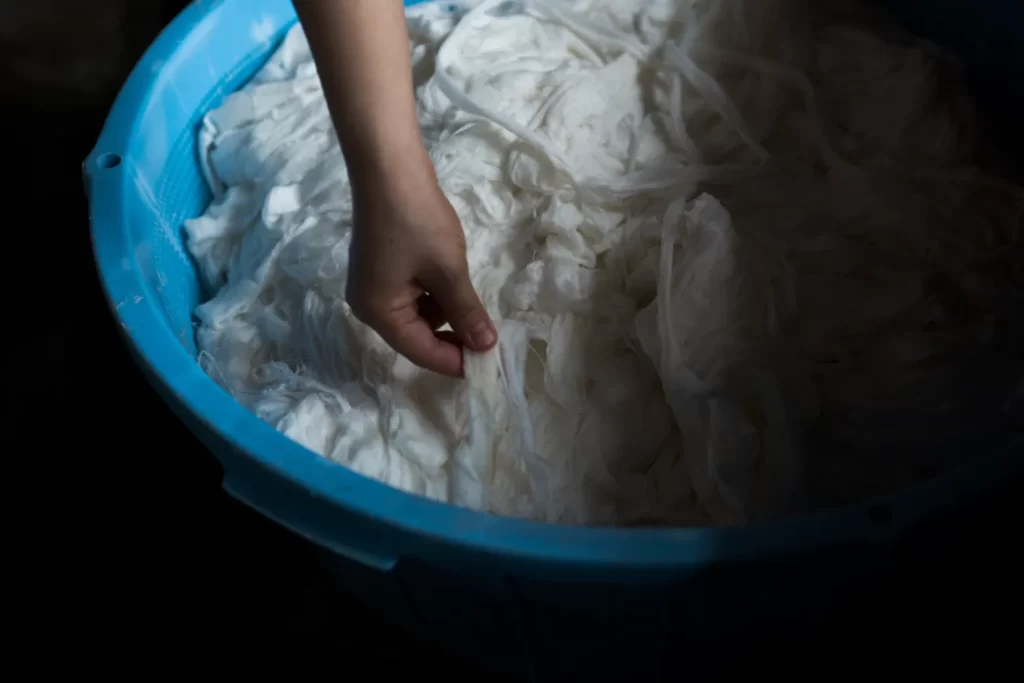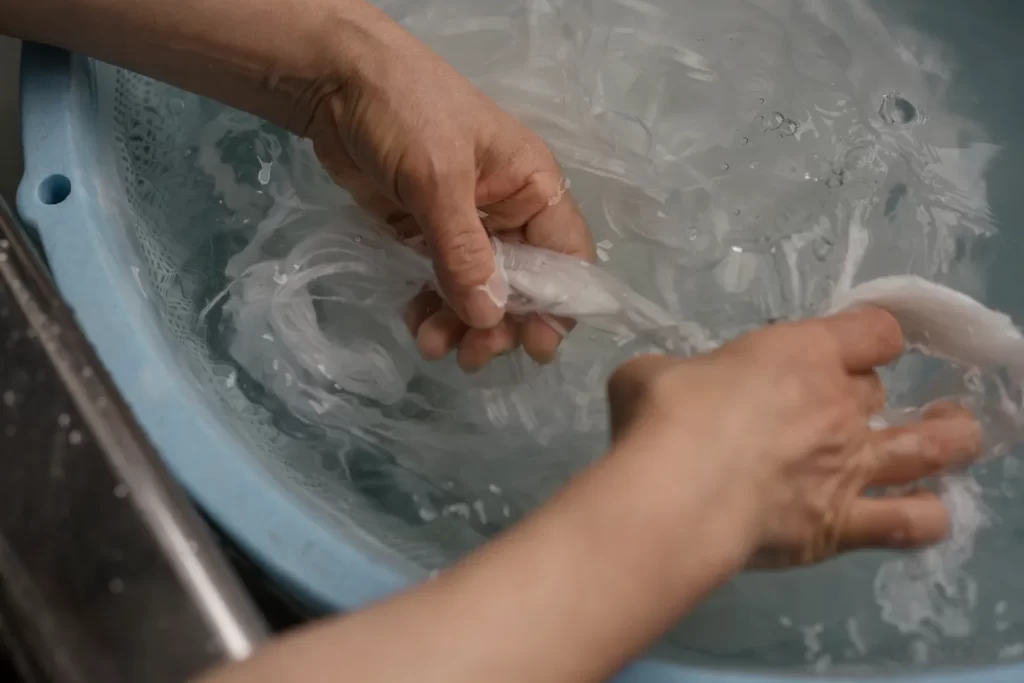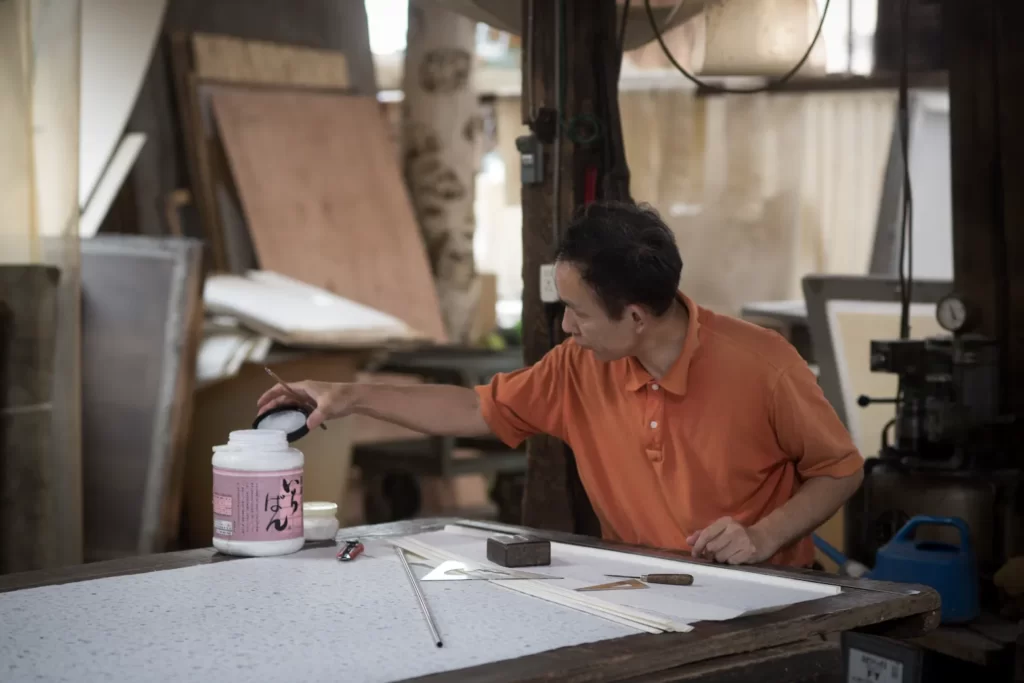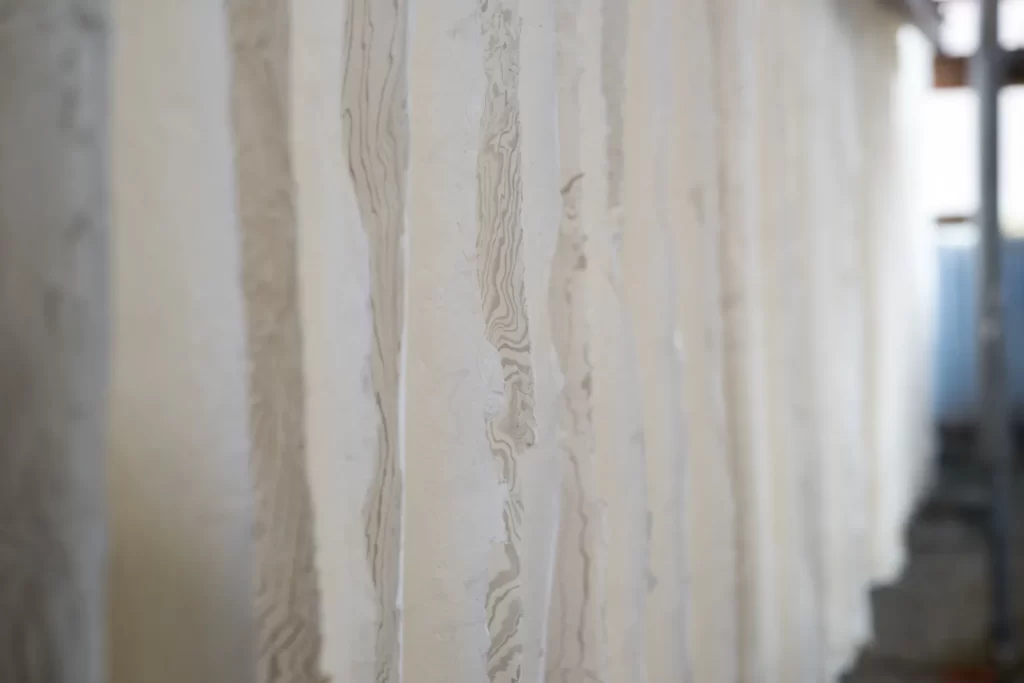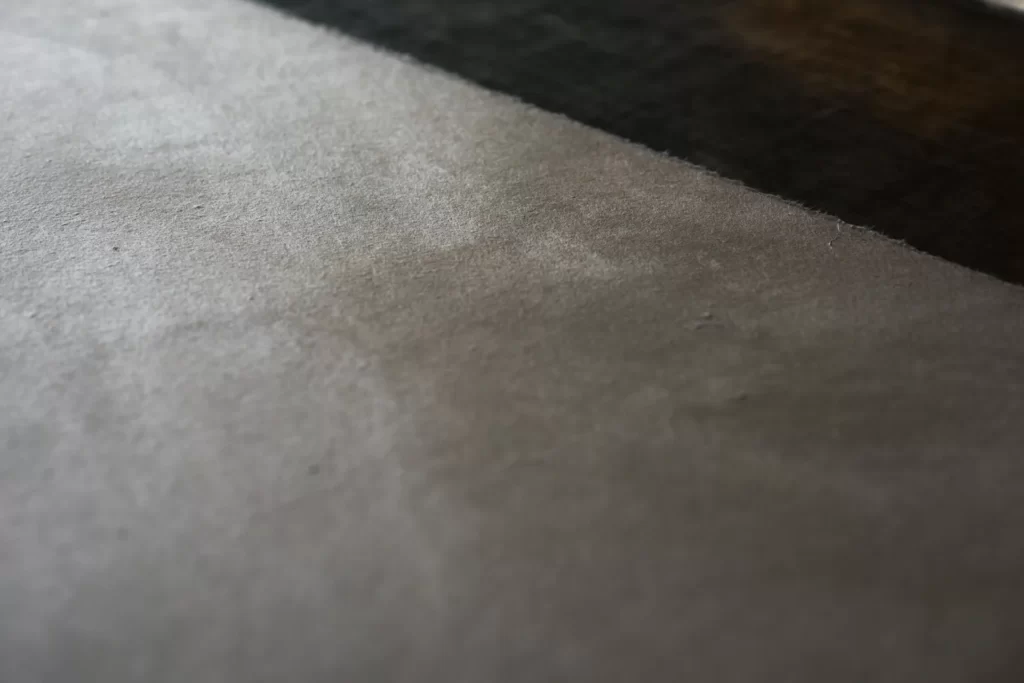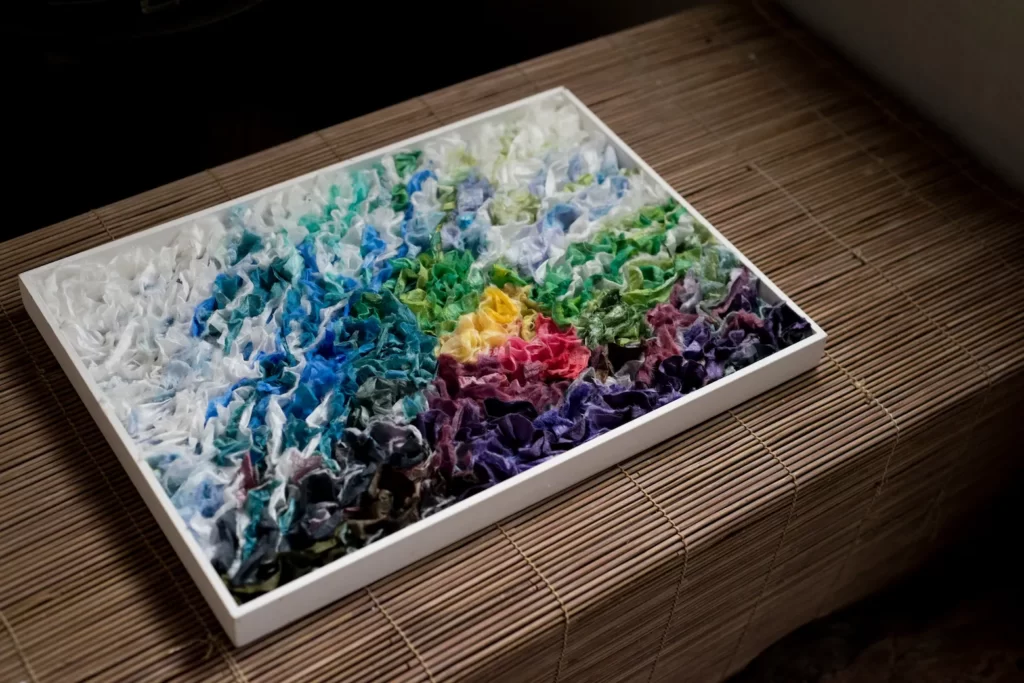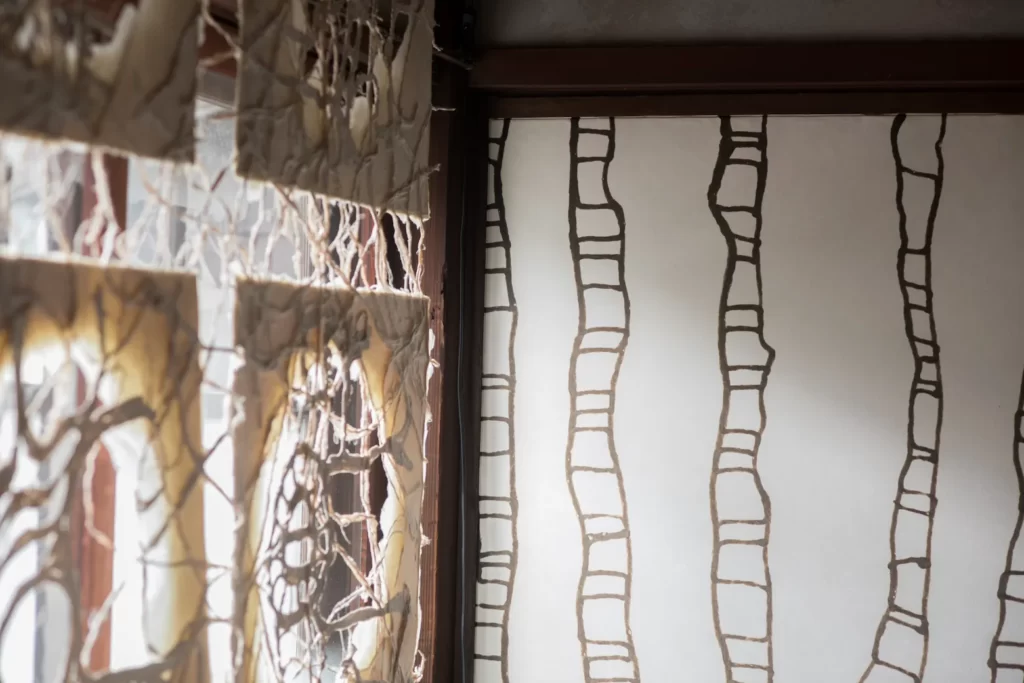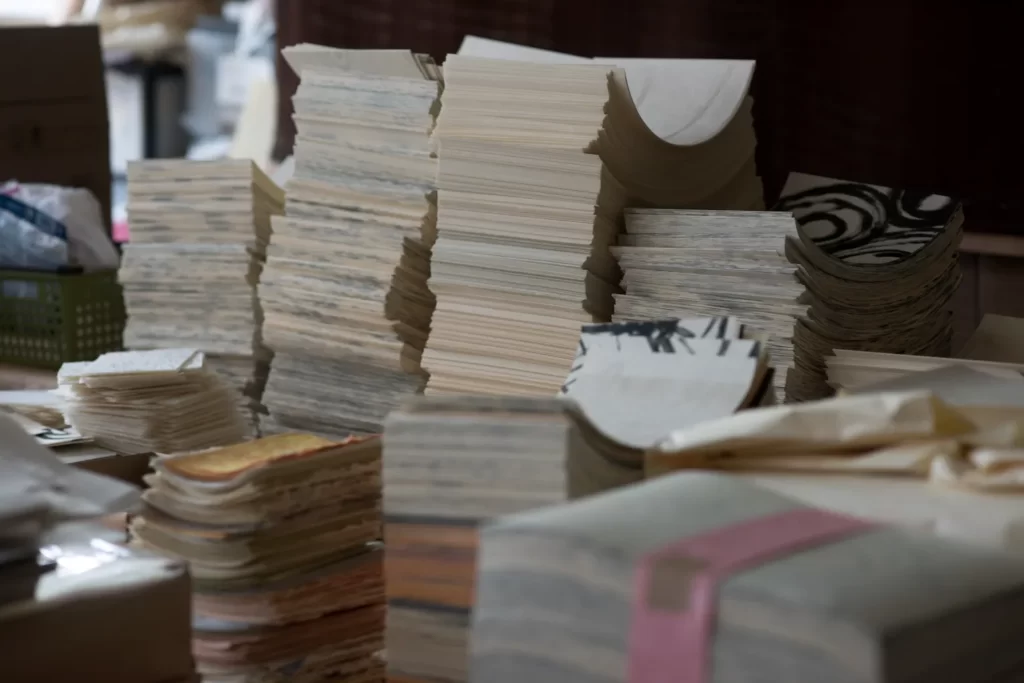Discover Washi – An Innovation in Japanese Papermaking
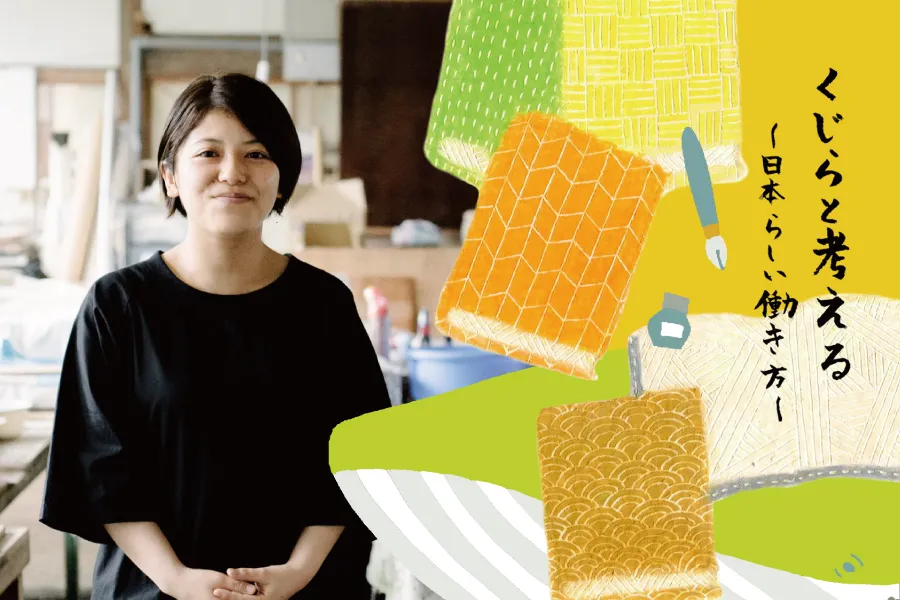
In the world of traditional Japanese craftsmanship, few industries have gracefully managed to stand the test of time owing to their rooted traditions and aspirations for constant innovation. One such industry is the impressive world of Washi, or handmade Japanese paper.
For over 1500 years, the Fukui Prefecture, lying in the heart of Echizen City of Japan, has been the cradle of Washi, the exquisite and delicate handmade Japanese paper. A region steeped in tradition and craftsmanship, Echizen City is renowned for its deep-rooted papermaking heritage, and its story is a testament to the art of adapting to change while preserving heritage.
In this article, we will delve into the remarkable journey of Izumi Osada, a producer of Washi (handmade Japanese paper) based in Echizen City, Fukui Prefecture. Her experiences shed light on the ever-evolving landscape of the Washi industry, teaching us invaluable lessons about adapting to change, finding inspiration in heritage, and how tradition and innovation can come together to redefine the world of Japanese papermaking.
Tracing the Roots of Washi

Echizen City, often referred to as “the home of Echizen Washi,” boasts a rich history as a center for Washi production. Nestled between two small mountains, this picturesque town is home to as many as 50 Washi-related companies. Among them is Osada Washi, where the young Izumi Osada discovered her calling.

Izumi Osada
Born in Fukui Prefecture. After entering Kansai University, worked for 3.5 years at a travel agency specializing in unexplored foreign lands in Tokyo, and returned to Japan in December 2017 to train to become a paper-maker at her family’s Nagata Paper Mills. She is also studying daily as a shrine guide and local town walking guide.
Izumi’s journey begins with her childhood in Fukui, where her family has been running Osada Washi for five generations. However, her path took her far from her hometown when she pursued her studies at Kwansei Gakuin University and later worked at a Tokyo-based travel agency specializing in overseas destinations. But as fate would have it, both these experiences made Izumi realize the untapped potential of her family’s papermaking tradition & business of Washi.
“I was interested in finding something new, discovering unmet customer needs, and developing and selling a product that can meet those needs. When I thought about the environment that would allow me to accomplish all of the above, my family’s business came first to mind.

Additionally, her job in the travel agency, which gave her the chance to travel to different countries, also made her realize the uniqueness of Japanese business culture that is deeply rooted in its heritage.
Returning to Fukui in December 2017, Izumi began training to become a papermaker at her family’s business. Her story is a testament to the ebb and flow of destiny, as she reflects on her upbringing, “The company was founded five generations ago and has been run by my family ever since. Some of the papermakers have been working at the company since I was born, and we all treat each other like family.”
How does Osada Washi always manage to stay in Trend?
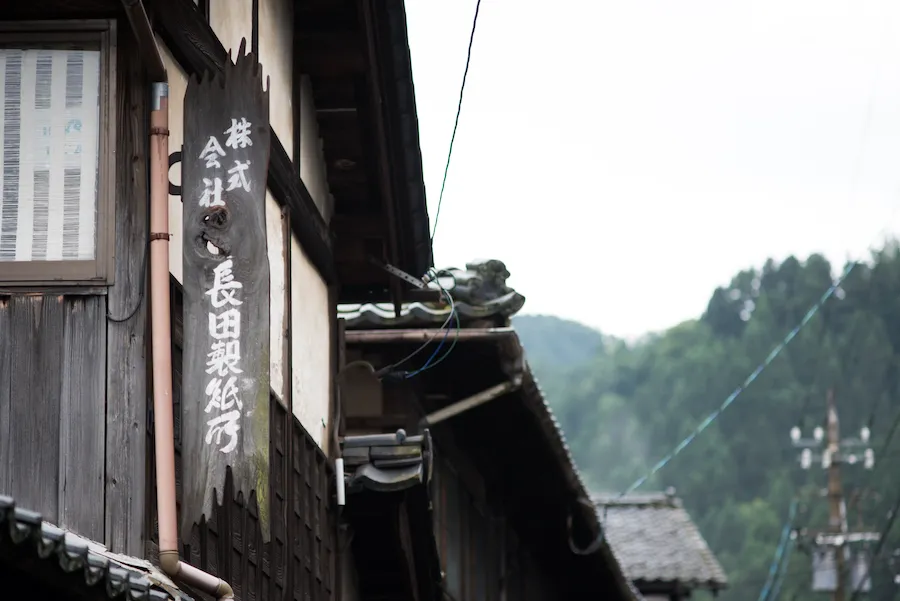
Upon her return to Osada Washi, Izumi noticed the company specialized in crafting large-sized Washi, particularly paper for sliding doors. Yet, the shifting architectural landscape of Japan necessitated a change in their product offerings.
“The hand-made paper produced by the founder was plain paper used for sliding doors. It was my grandmother who said, ‘Why don’t we make something more elaborate by hand, something that a machine can’t produce,’ and started designing handmade paper with patterns printed on it depicting mountains or snow. The designs are admittedly old-fashioned, but they became one of our main products.”
The sliding door paper comes in various varieties, from mountains drawn as if they were far away to elegant designs adorned with delicate gold leaf. Crafting these intricate designs is a labor-intensive process, involving the careful application of different colors onto wet unprocessed paper or using molds to add raw materials.
“With Washi, whether you end up with a good product depends on how you spread out the raw materials. You also need to familiarize yourself with the characteristics of each material to achieve the desired design. My grandmother had learned design at a dressmaking school, so she created the patterns while also making the paper herself. All of our other products are created in-house as well, starting from the design.”
Izumi’s father has been instrumental in expanding their product range. In addition to sliding door paper, he crafts Washi for wallpaper and interior designs. These products, often tailored to specific customer requests, highlight the family’s commitment to preserving traditional techniques while embracing innovation.
“While our main product is still sliding door paper, it’s clear that the demand is decreasing as traditional Japanese-style rooms become less popular. This may be true in other industries as well, but as we move away from an age where mass production was considered the top priority, we need to change many of the ways we do things.”
Izumi’s Journey from Failed Experiments to a Game-Changing Idea!
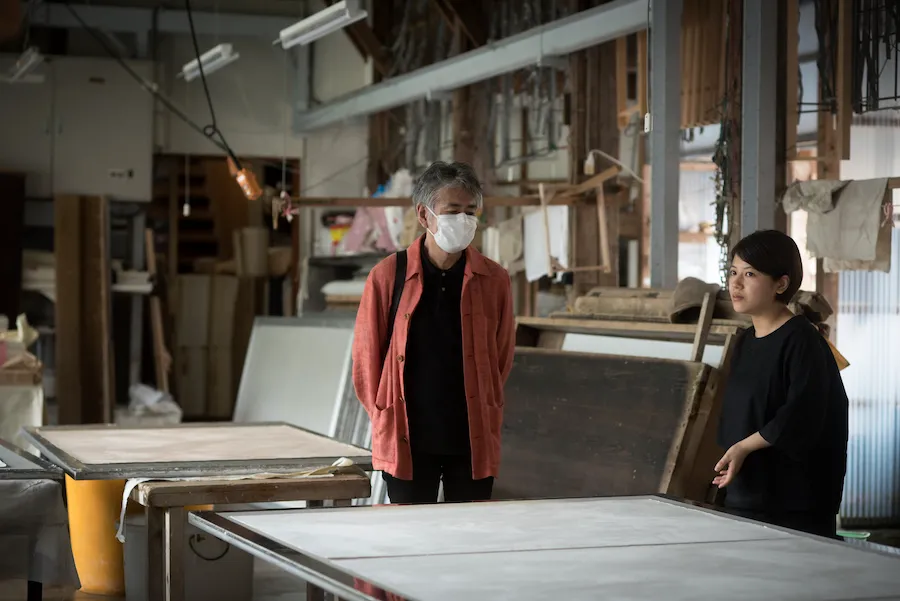
Returning to her hometown, Izumi not only embraced the art of papermaking but also dedicated time to pondering how to sell and distribute Washi in innovative ways. She ventured into uncharted territory, experimenting with ideas like crafting accessories from paper and even selling scrap material assets.
“Once, I tried creating a wrapping cloth made out of Washi. The idea was to create a kind of Washi handbag. In the end, I wasn’t able to come up with a sellable product. It was pretty much a failure. As I tried various things, I gradually came to have an idea of what sort of uses aren’t appropriate or suitable for Washi.”
Her family-run business gave her the freedom to take risks and explore new avenues. One of her ambitious projects, the “Torinoco Note,” turned out to be a game-changer.

“We collected Washi made not only by us but by other businesses in the region and came up with a notebook with customizable covers where the user can choose from among a hundred options. There are many paper manufacturers in this region specializing in various techniques, so we wanted to have a line-up of different patterns to get more people to know about Echizen-Washi.”
Using crowdfunding to gather support, the Torinoco Note became a sensation. Izumi’s innovative approach to offering customization options at events resonated with customers.
“Washi was originally intended for the pages inside a notebook. But that is too expensive to do in this day and age, and there isn’t a lot of demand for it. So, we came up with the idea of upgrading the Washi to be used for the covers instead, which sparked this project.”

Izumi’s projects have not only introduced her to customers within Japan but have also helped her forge connections with people from around the world. She’s determined to raise awareness about Echizen-Washi as a globally relevant craft.
She says, “I think we are a long way from making a real difference, but when we produced the notebook, we heard people say ‘I didn’t know such a company existed’ or ‘I’ve never seen this kind of technique.’ I think we are making people more aware of Echizen as a paper-producing region.”
How Echizen-Washi is Preserving Tradition Through Innovation
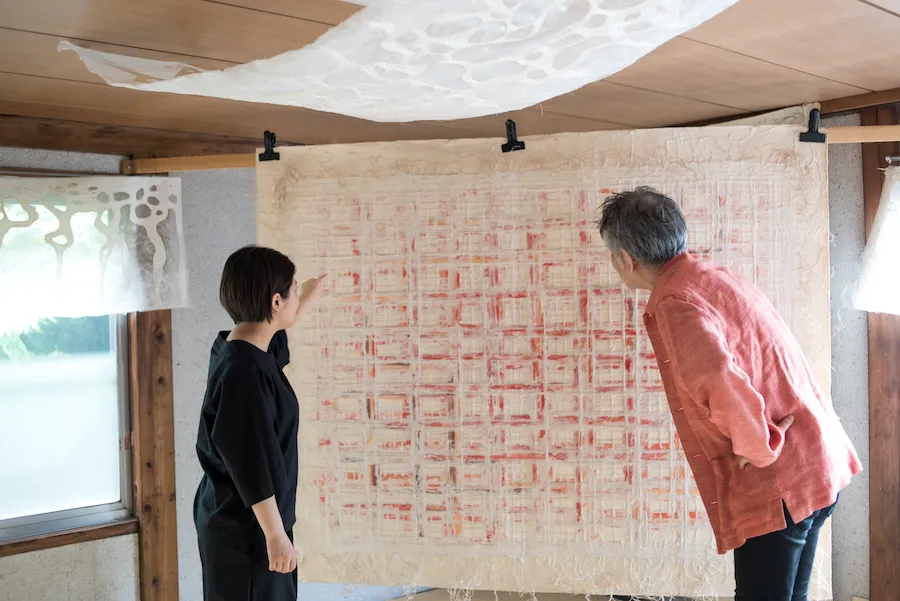
Izumi’s journey embodies the spirit of Echizen-Washi, which continually explores new production techniques and adapts to changing times and needs. Tradition and innovation are not opposing forces here but complementary elements that propel the craft forward.
“It’s not just me; people in this region have always been trying out new things,” Izumi emphasizes. “There are those of my parent’s generation and the generations that came before that, who have created new kinds of paper and introduced bold methods that go beyond our conventional understanding of Washi… I think this region has always been accepting of trying out new things.”
The legacy of Echizen-Washi traces back to its origins as paper used for copying Buddhist sutras by monks. Over time, it evolved to serve various purposes, including public documents and even hand-crafted bills. Each generational shift in these family-run papermaking businesses has been more of a revolution, reinventing the way they operate.

Izumi stresses, “I believe it’s rare for a business to sell its competitors its own paper to produce a notebook. I think we have such a good relationship because we are each doing something different. I hope that, in the future, the companies can refer each other for suitable jobs. This can strengthen the brand of our entire region as a producer of Washi.”
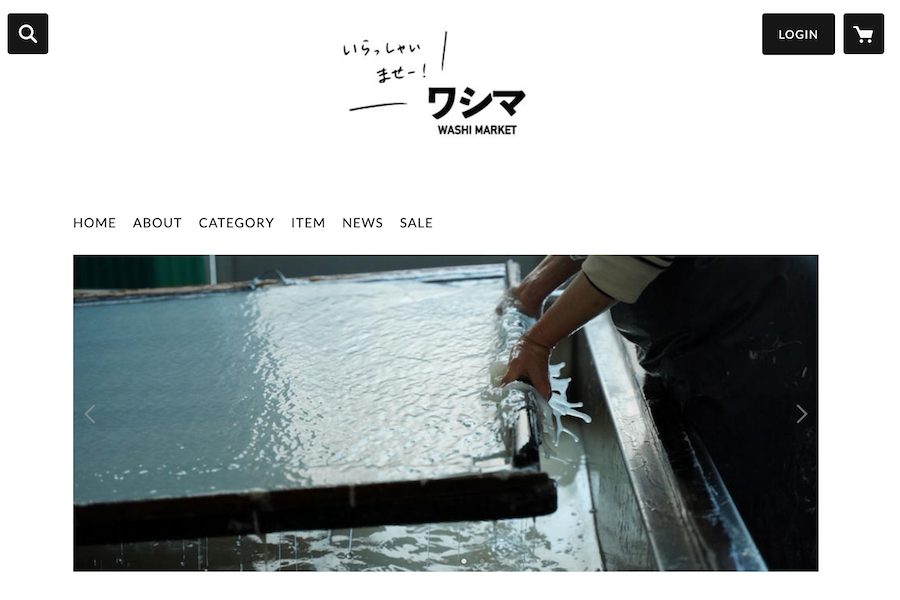
Izumi’s latest project, called “The Washi Market”, involves an online store that collectively sells the products of all the papermakers from the region, a collaborative effort aimed at supporting the unique craft of papermaking in Echizen and introducing their work to a wider audience. The project also aims to strengthen the local brand and revitalize the industry in the face of challenges, particularly those posed by the pandemic.
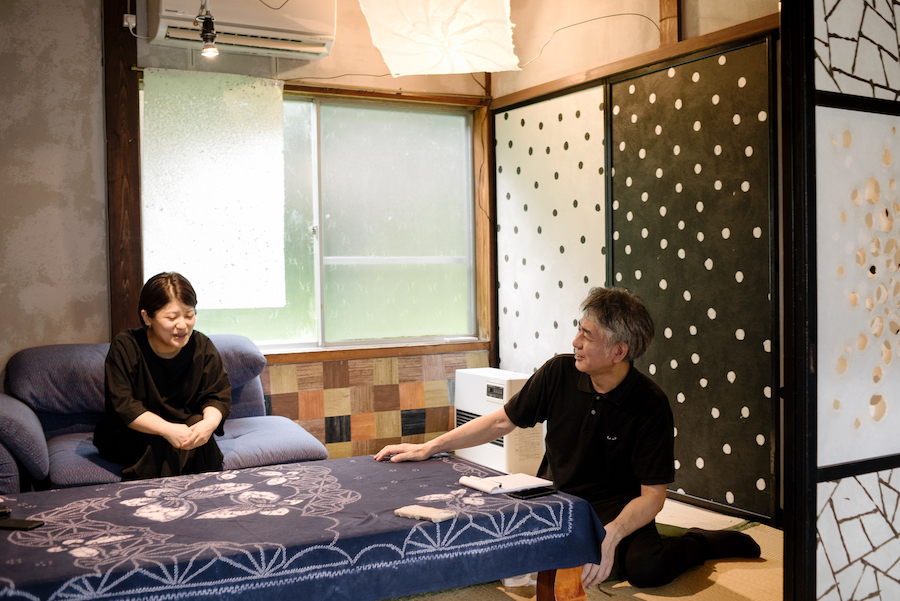
Echizen-Washi: The Ultimate Jack of All Trades in Japanese Paper!
In Japanese papermaking, three main types of Washi stand out: Mino-Washi, Tosa-Washi, and Echizen-Washi, the focus of our exploration today. While Mino-Washi excels in consistency and Tosa-Washi is known for its ethereal delicacy, Echizen-Washi stands out for its versatility and multitude of forms, thanks to diverse production techniques. Indeed, the defining feature of Echizen-Washi is its very diversity.
The 1500-year history of Echizen-Washi is a testament to the enduring spirit of innovation. Echizen-Washi isn’t just about preserving tradition; it’s about the continual transformation of tradition through innovation. As each generation takes charge, they build upon the wisdom of their predecessors to chart new courses.
The legacy of Echizen-Washi is a reminder that innovation and tradition need not be at odds. In this quiet corner of Japan, where the ancient art of papermaking thrives, innovation is the lifeblood that keeps tradition vibrant. Tradition is not merely preserved; it’s redefined and rejuvenated, adapting to the demands of the modern world.
At the heart of Japanese culture, the spirit of innovation thrives in every craft, in every tradition, and in every generation, ensuring that the legacy of the past lives on in the innovation of the future!

Yasushi Kujirai
Mr. Kujirai is engaged in researching how the working environment should be in order to make everyone involved in the office happy, and developing methodologies and tools to construct such a working environment. For more than 30 years, he has been actively seeking to acquire a wide range of knowledge in order to deal with the extremely interdisciplinary subject of the office. His major publications include “Office Jiten (Office Dictionary),” “Office Environment Planning Handbook,” “Management Innovation and Office Environment,” “Office Evolution,” and “Future Prospects for ‘Hataraku'” (The Future of ‘Work’).
Updated August 19, 2021
Taken in July 2021
Production Cooperation: Kimi Nakajima
Photo : Rui Deji
Illustration : Uni no Reona




